This post may contain affiliate links. Please read my privacy policy.
Kuih Dadar, also known as Kuih Ketayap, is one of my favorite Nyonya kuih! Imagine pandan-flavored crepes paired with a sweet coconut filling made with Gula Melaka (Malaysian palm sugar). It’s a delightful treat that’s absolutely delicious and surprisingly easy to make at home—perfect for tea time or as a light snack throughout the day.
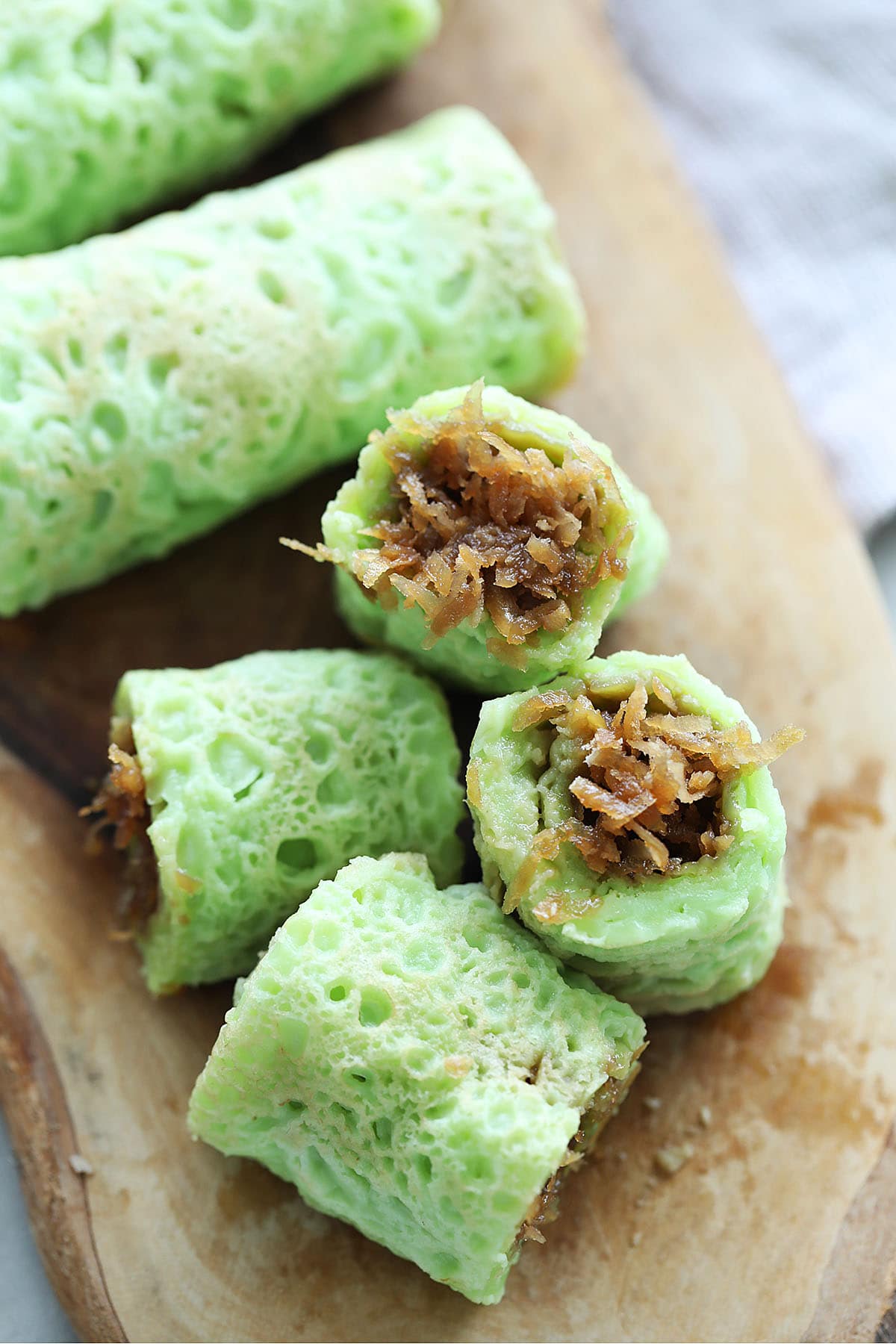
Table of Contents
- Easy Homemade Kuih Ketayap Recipe
- Why You’ll Love This Recipe
- Ingredients You’ll Need
- Secret Ingredient
- How To Make Kuih Dadar (Kuih Ketayap)
- Secrets To Perfect Kuih Dadar Every Time
- Frequently Asked Questions
- Other Kuih Recipes You Might Like
- Other Malaysian Recipes You Might Like
- Kuih Dadar (Kuih Ketayap) Recipe
Easy Homemade Kuih Ketayap Recipe
Nyonya kuih—or Nyonya sweet cakes—are such a big part of Nyonya cuisine, and I absolutely love them! They’re iconic, dainty, and so eye-catching that they often steal the spotlight from savory Nyonya dishes. These sweet treats are actually adaptations of Malay kuih-muih, which are the Malay version of sweet cakes and desserts.
Sometimes called kuih ketayap, this treat is essentially a rolled crepe infused with pandan juice and filled with grated coconut cooked in Gula Melaka, or Malaysian palm sugar. These days, many kuih vendors rely on artificial coloring for convenience, but I stick to tradition in my kuih dadar recipe by using only natural pandan juice. It adds that authentic flavor and fragrance I absolutely adore.
Even though so many people have enjoyed Nyonya kuih, few actually attempt to make them at home. I get it—making Nyonya kuih can seem tedious and challenging—but my recipe makes it so much easier with tips to get that perfect texture and flavor. It’s such a rewarding experience to make these from scratch, especially if you have a sweet tooth like me and are living far from home.
Check out my Onde-onde (Ondeh-ondeh) recipe for more delicious kuih recipes!
Sidenote: This kuih goes by a few different names—kuih dadar, kuih ketayap, kuih tayap, dadar gulung, and kuih gulung. In Singapore, they spell it a bit differently as kueh dadar. It’s interesting how one dessert can have so many names, showing just how versatile and loved it is across Southeast Asia, especially in Malaysia, Singapore and Indonesia.
Why You’ll Love This Recipe
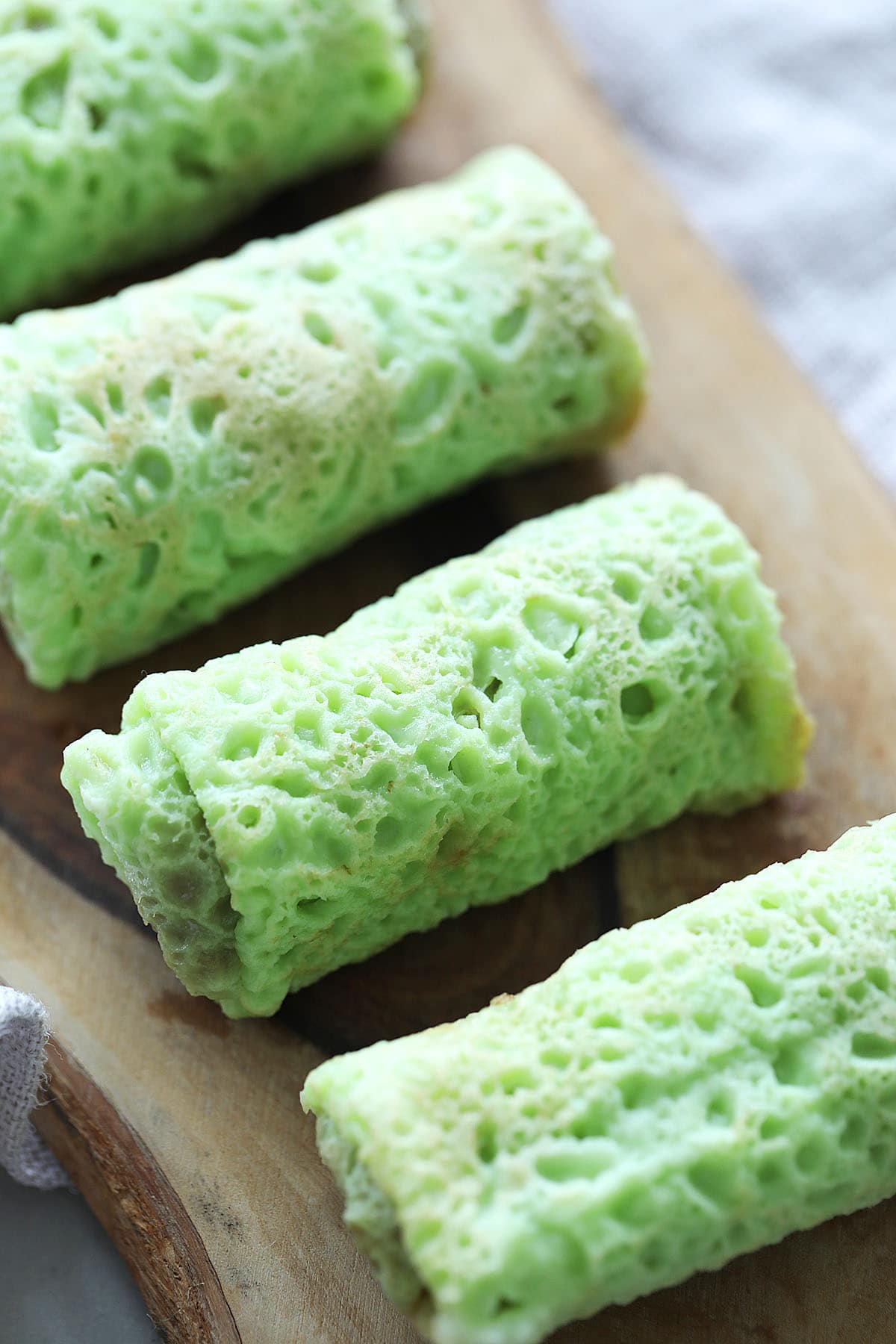
- Authentic and traditional. This easy recipe brings out the real flavor of Nyonya cuisine by using natural pandan juice and Gula Melaka (Malaysian palm sugar), which is exactly how I like it—authentic and tasty!
- Homemade from scratch. Everything just tastes better; it’s a true labor of love!
- Easy to make. This recipe has just 4 simple steps—anyone can do it, even if you’ve never made Nyonya kuih before.
- Lipsmackingly good! The traditional combination of sweet filling made from grated coconut and gula Melaka, wrapped in delicate, soft green crepes, is both nostalgic and irresistibly delicious.
Ingredients You’ll Need
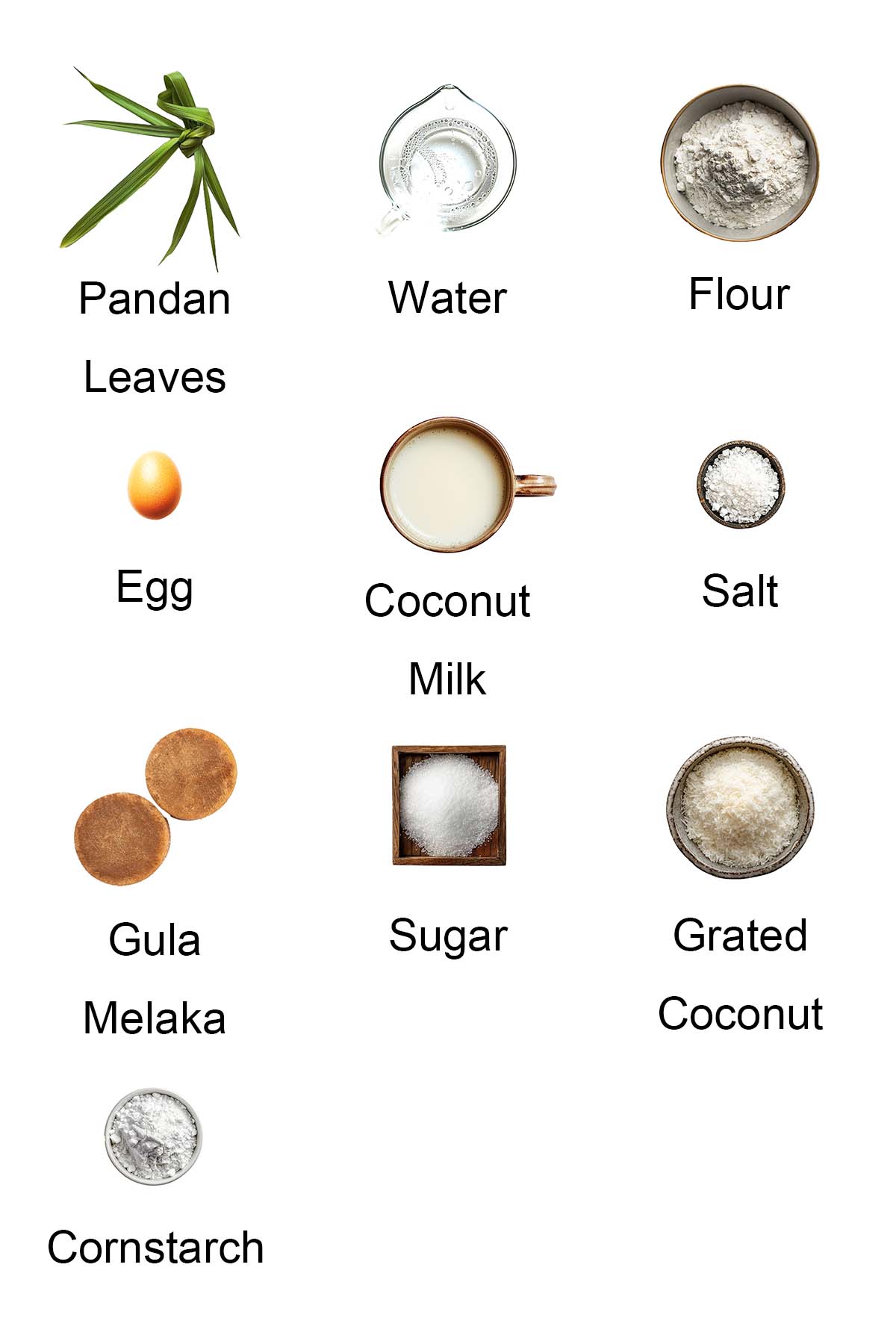
- Pandan leaves – The core ingredient in this recipe. Using fresh pandan leaves is key to getting that authentic taste and beautiful color. There is really no real substitute other than pandan leaf extract in a bottle.
- Flour – Use all-purpose flour or plain flour to make the crepe.
- Egg
- Coconut milk – Use full-fat coconut milk (santan) for the best result.
- Gula Melaka – Look for Gula Melaka sold in solid blocks or discs. This type is less processed and keeps more of its natural sweetness and rich flavor.
- Sugar
- Grated coconut – Use fresh, unsweetened grated coconut for the best flavor and moisture in the filling. Using dried or sweetened coconut can change the taste and texture of the dish.
- Cornstarch
Please refer to the recipe card at the bottom of this post for full details on each ingredient.
Sidenote: When I was growing up, my late grandmother, a famed Nyonya kuih maker, had a wooden coconut grater shaped like a wooden horse. You’d sit on the flat side of the tool and grate fresh coconut halves (with the shell attached) using the sharp grater at the front. If you’re in Asia, you can find fresh grated coconut at the wet markets. For those living outside Southeast Asia, frozen grated coconut in plastic packets is available in the frozen section of Asian grocery stores.
Secret Ingredient
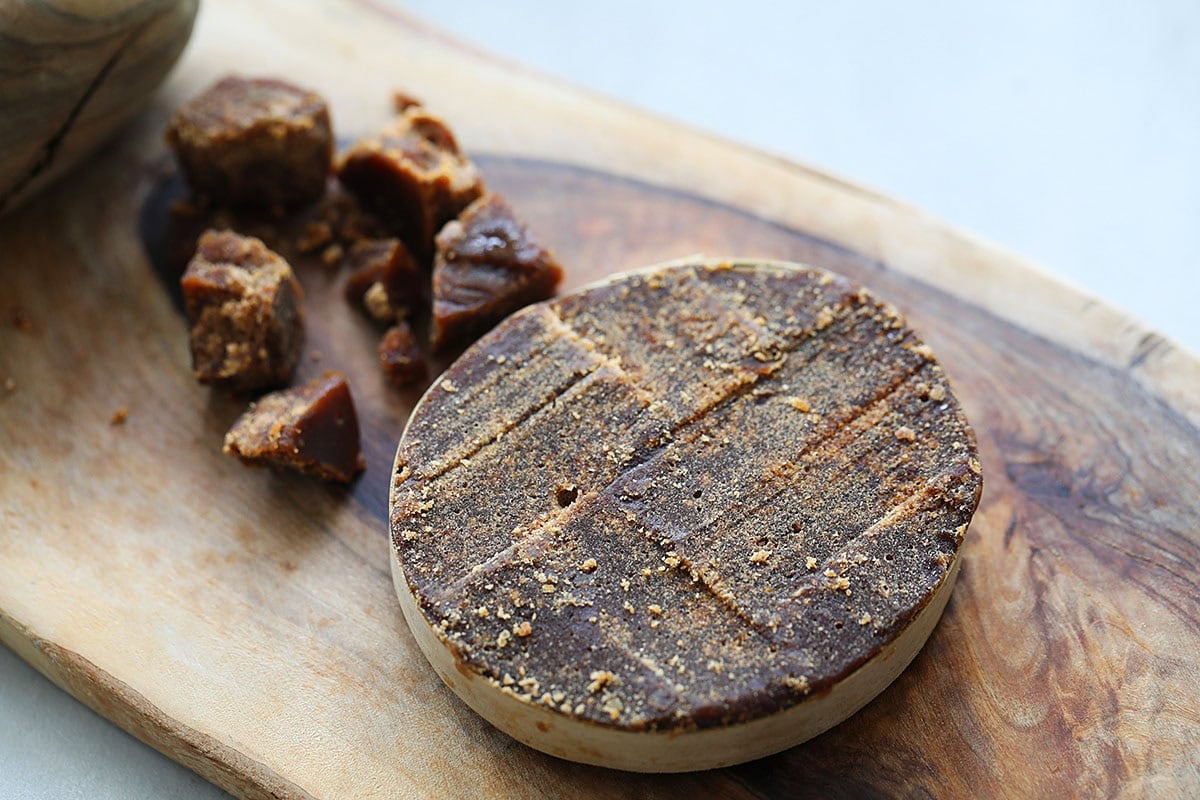
The secret ingredient in my kueh dadar recipe is the Gula Melaka. Its deep caramel-like sweetness gives the filling an irresistible richness that stands out. Combined with the fragrant pandan crepes, it creates a perfect balance of flavors that’s both indulgent and authentic. This is what makes my recipe truly special!
Shopping Guide: If you can’t find Gula Melaka, you can substitute it with dark brown sugar, coconut sugar, or palm sugar for a similar caramel-like flavor.
How To Make Kuih Dadar (Kuih Ketayap)
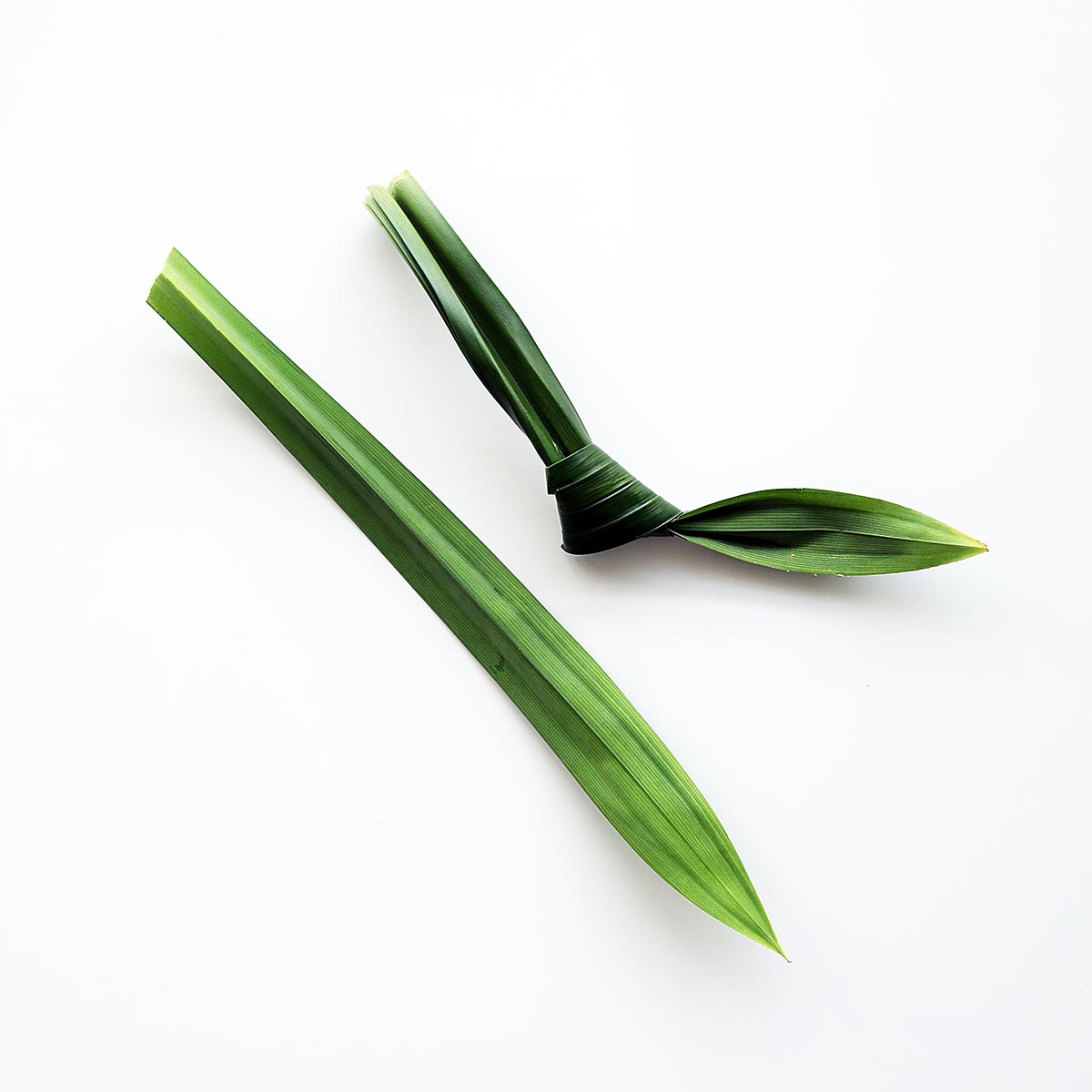
Let’s get started! First, we’re going to make the pandan juice. Toss the pandan leaves and water into an electric blender and blend them up for about a minute. Then, wrap the blended mixture in a cheesecloth or muslin cloth and give it a good squeeze to get all that lovely green juice out. If you don’t have that, you can strain it through a fine sieve, use the back of a spoon to press and squeeze the juice out.
Alright, now let’s make the crepe batter. Start by sifting the flour into a mixing bowl and make a little well in the middle. Crack in the egg, then slowly stir in the salted coconut milk and 3 tablespoons of pandan juice. Once it’s all mixed together, just set it aside.
Let’s make the filling next. Break up the palm sugar and combine it with the sugar, pandan leaves, and water in a pot. Cook it over medium heat until the sugar dissolves. Then, strain the syrup and put it back in the pot. Add the grated coconut and cornstarch, and cook for a few more minutes. The filling should be moist and a bit sticky wet when it’s done.
Next, make the pandan crepe by using a shallow frying pan over a low heat. Lightly grease it with a bit of oil, pour 2 tablespoons of the batter into the center and swirl the pan around to spread it out. You should end up with a thin crepe about 13 cm (5.1 inches) in diameter. Repeat until all the batter is used up, then stack the crepes for filling.
Finally, it’s time to roll the kuih. Place 2 heaping teaspoons of the filling onto each crepe, then roll it up tightly like a spring roll. Repeat until all the crepes and filling are used up. Voila, you’re now officially a Nyonya kuih maker!
Make-Ahead Instructions: You can prepare the coconut filling the night before and chill it, covered. This allows the filling to develop its flavor overnight, resulting in a richer, more decadent taste. Plus, chilling the filling makes it easier to wrap and roll the kuih gulung the next day!
Secrets To Perfect Kuih Dadar Every Time
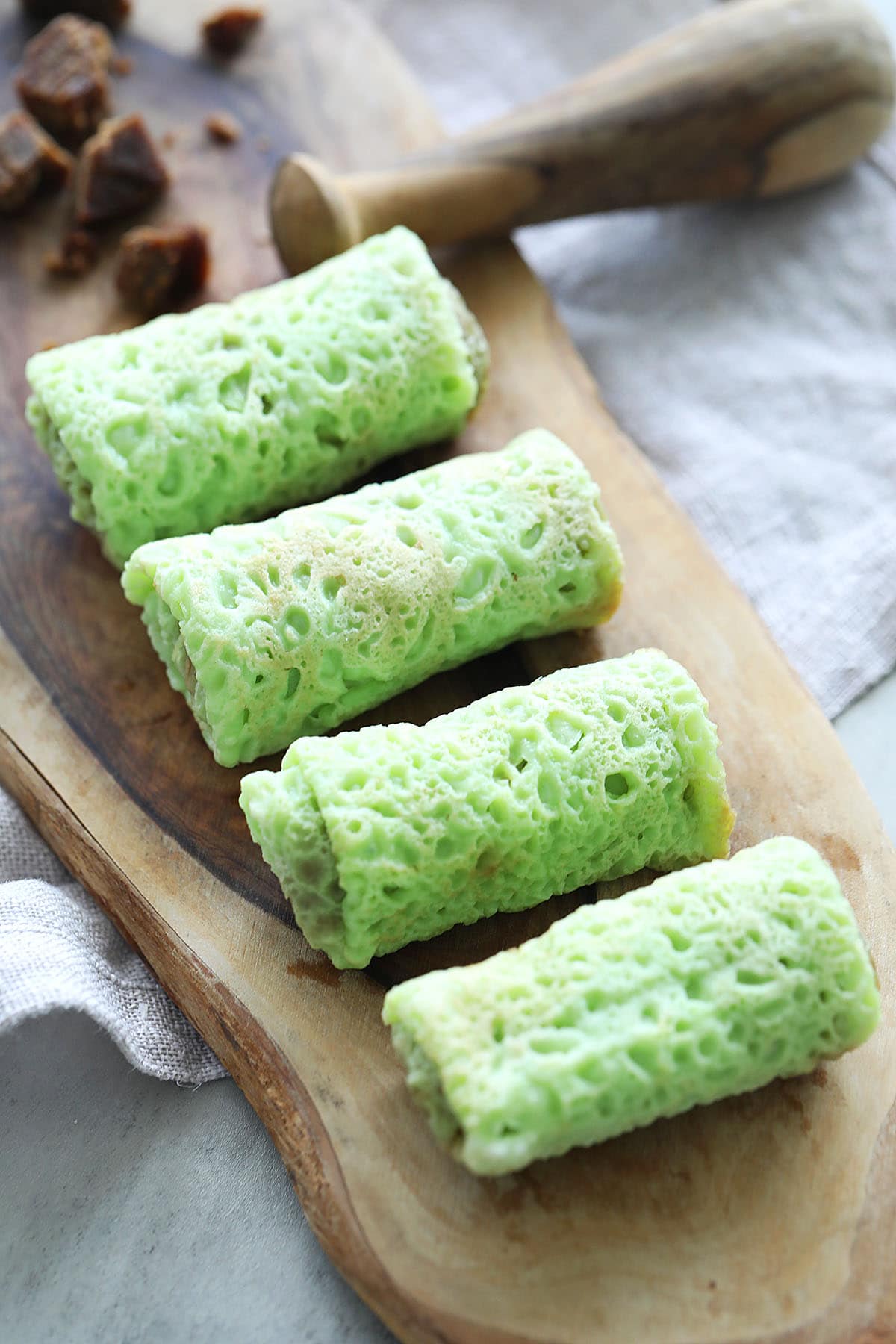
- Choose pandan leaves that are vibrant green, fresh, and free from yellowing or wilting, as these indicate the freshness and fragrance.
- When I mix the batter, I slowly incorporate the coconut milk and pandan juice into the flour and egg mixture. This ensures a smooth batter without lumps.
- To avoid burning the crepes, I test the pan temperature by pouring a small amount of batter; if it sizzles, it’s too hot. Adjust the heat to medium-low for even cooking. Perfectly cooked crepes should look like my photos, with light brown marks on the surface but not burned.
- Make sure the filling is not too wet or watery, as this can make the crepes soggy and harder to roll.
Frequently Asked Questions
You can use frozen pandan leaves if fresh ones aren’t available, but keep in mind the flavor might not be as strong or fragrant. Thaw them before using.
Yes you can, if fresh pandan leaves are not accessible.
Do not roll and store the leftovers, as the kuih will turn soggy at the bottom. I recommend storing the leftover crepes and coconut filling separately. Just roll them together when you are ready to eat.
Each roll of Kuih Gulung is only 150 calories.
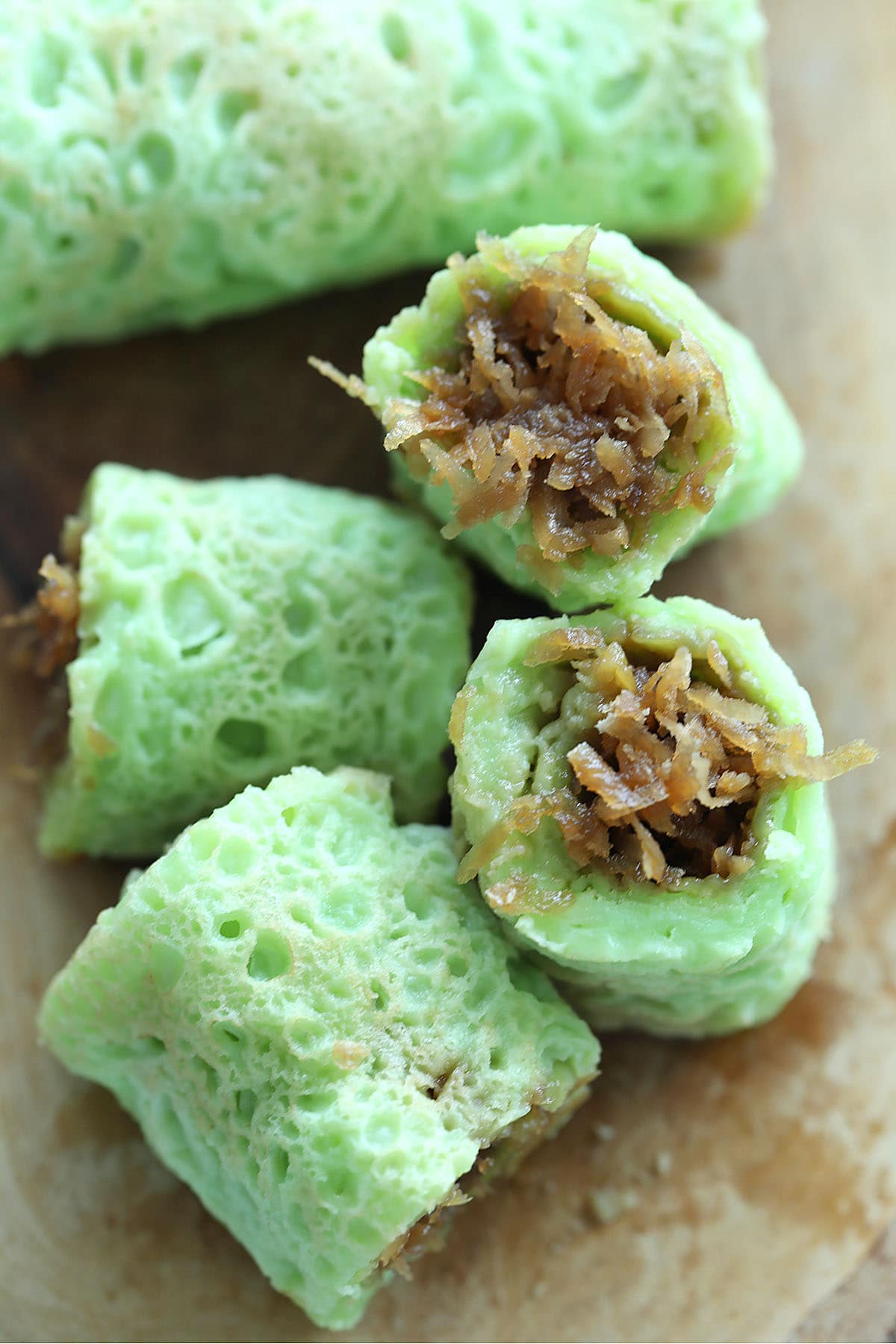
Other Kuih Recipes You Might Like
There are many types of kuih in Malaysia. If you wish to try making kuih at home, I recommend the following recipes.
I hope you enjoy this post as much as I do. If you try my recipe, please leave a comment and consider giving it a 5-star rating. For more easy and delicious recipes, explore my Recipe Index, and stay updated by subscribing to my newsletter and following me on Facebook, Pinterest, and Instagram for new updates.
Other Malaysian Recipes You Might Like
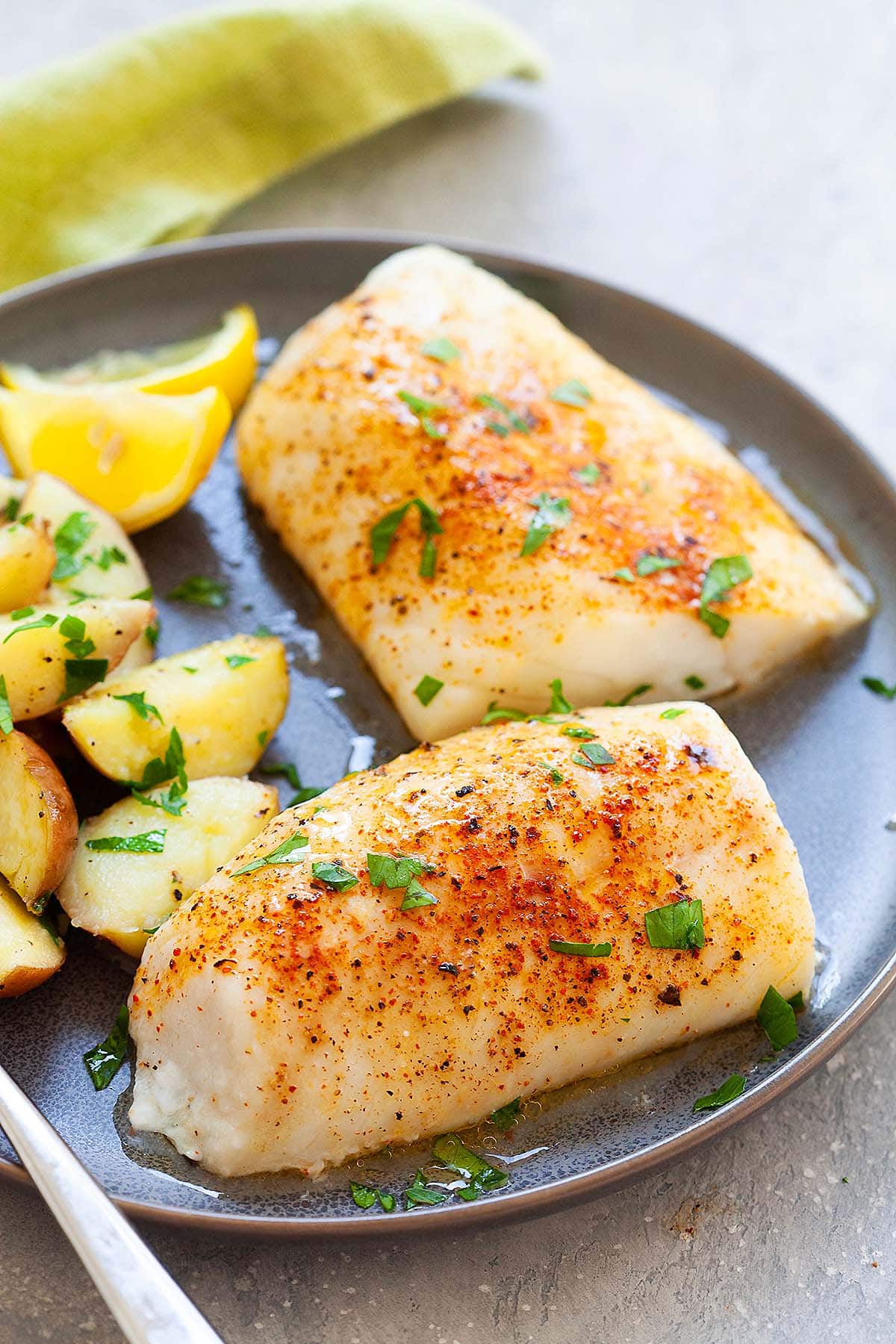
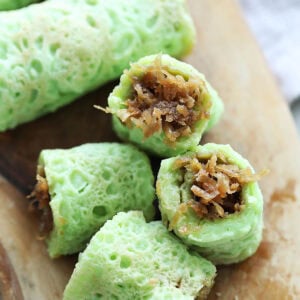
Kuih Dadar (Kuih Ketayap)
Ingredients
Pandan Juice
- 5 pandan leaves, chopped
- 3-4 tablespoons water
Crepe Batter
- 120 g (3¾ oz) all purpose flour
- 1 egg
- 300 ml coconut milk
- 1/4 teaspoon salt
- 3 tablespoon pandan juice
- oil, for greasing
Coconut Filling
- 90 g (3 oz) Gula Melaka, Malaysian palm sugar
- 1 tablespoon sugar
- 1 pandan leaf, knotted
- 50 ml water
- 1.5 cups grated coconut
- 1 teaspoon cornstarch
Instructions
- Pandan Juice: Combine the pandan leaves and water in an electric blender and blend for about a minute. Wrap the blended pandan leaves in cheesecloth or muslin cloth and squeeze to extract the juice, or strain through a fine sieve. Set aside.
- Crepe Batter: Sift the flour into a mixing bowl. Make a well in the center and crack in the egg. Slowly stir in the coconut milk, salt and 3 tablespoons of pandan juice. Set aside.
- Coconut Filling: Break up the palm sugar and combine it with the sugar, pandan leaf, and water in a pot. Cook over medium heat until the sugar dissolves. Strain the syrup and return it to the pot. Add the grated coconut and cornstarch, then continue to cook for a few minutes. Transfer to a bowl.
- Heat a shallow frying pan over low heat and lightly grease it with oil. Pour 2 tablespoons of the batter into the center and swirl the pan to evenly coat, forming a thin crepe about 13 cm (5.1 inches) in diameter. Repeat until all the batter is used up, then stack the crepes for filling.
- Place 2 heaping teaspoons of the filling onto each crepe, then roll it up tightly like a spring roll. Repeat until all the crepes and filling are used up. Serve immediately.
Notes
- Choose pandan leaves that are vibrant green, fresh, and free from yellowing or wilting, as these indicate the freshness and fragrance.
- When I mix the batter, I slowly incorporate the coconut milk and pandan juice into the flour and egg mixture. This ensures a smooth batter without lumps.
- To avoid burning the crepes, I test the pan temperature by pouring a small amount of batter; if it sizzles, it’s too hot. Adjust the heat to medium-low for even cooking. Perfectly cooked crepes should look like my photos, with light brown marks on the surface but not burned.
- Make sure the filling is not too wet or watery, as this can make the crepes soggy and harder to roll.
Nutrition
Nutrition information is automatically calculated, so should only be used as an approximation.
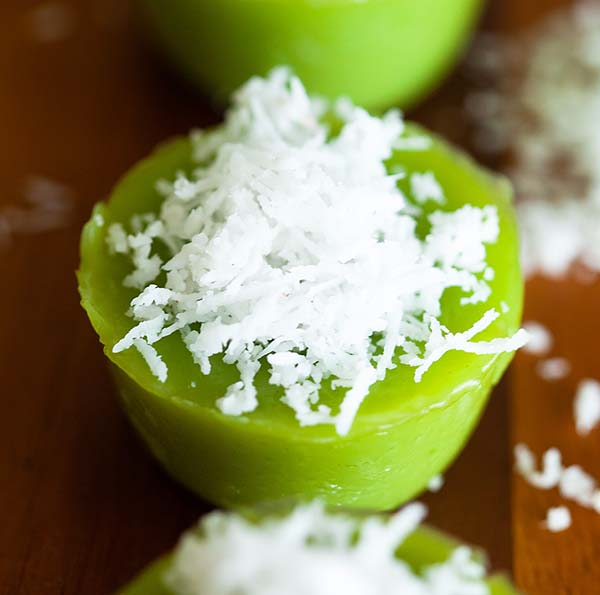
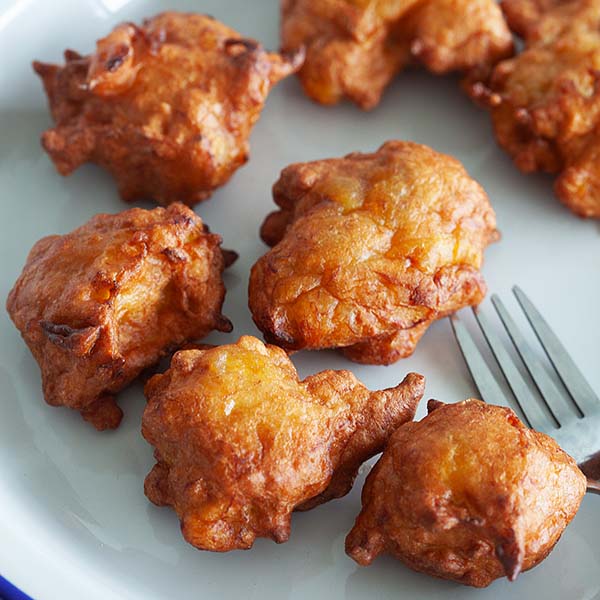
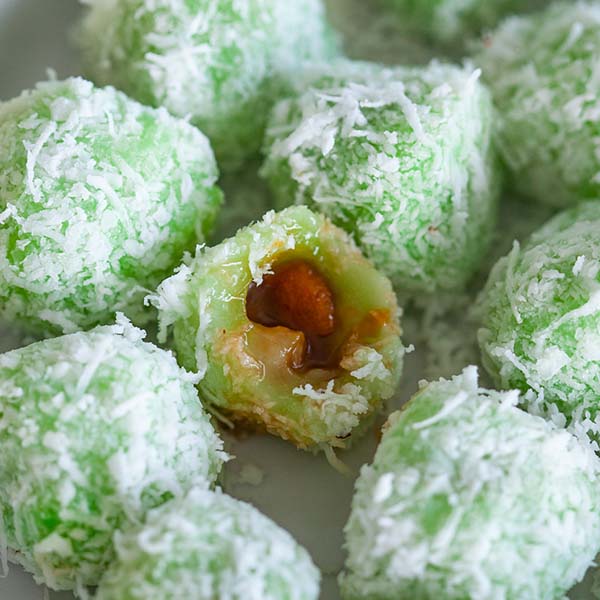
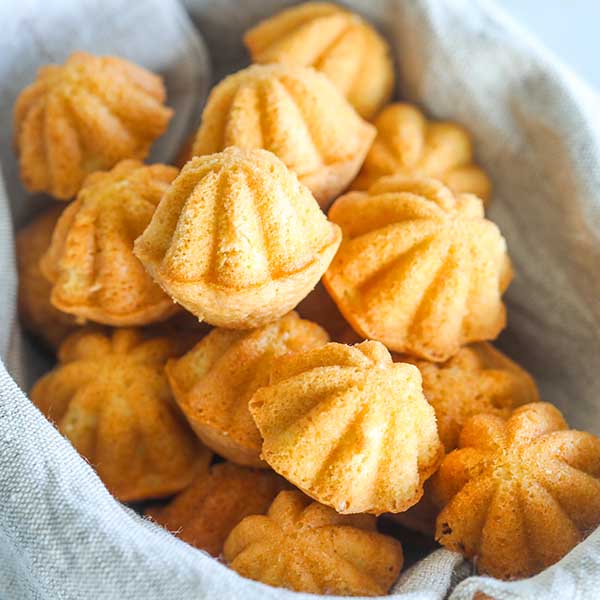






I’ve had kuih before and totally loved it and as said in one of the comments above would love to recreate the taste of it at home instead of having to trek around to look for it. Can you advise though if there is any alternative for egg in this recipe? My husband is lacto vegan and does not have eggs. Please advise.
I would like to ask can i use pandan essence instead? & what is the amount? thx
Love love love! I long for the taste of fresh pandan – very difficult to find here in Canada. My memories of Ipoh biscuits especially those with pandan are forever etched in my memory!
Mmmmm. Love!
The coconut milk used… is that the thick coconut milk or thin coconut milk?
Thick is better.
How many grams are there in 1/2 grated coconut?
How to make the pandan juice? Thanks
how many portion of this recipe?
Can you clarify the word “flour” in this recipe? Is it all purpose flour or rice flour that we Asian like to use the most for our cooking? Which one is it?
All-purpose flour.
Can we use gutinous rice flour?
No.
what is the serving of this recipe?
OMG Bee they are awesome!! i finally found pandan leaves in asian shops but they are frozen, i need to use double the leaves to get the color, but they are green as anything. Crepes are a little thick for my liking but hey something i can adjust next time, overall I am very happy with this, i am not from malaysia but love kuih dadar the first time i had it, now i can recreate that taste at home without trekking to shops hoping they might have some for sale.
yay!